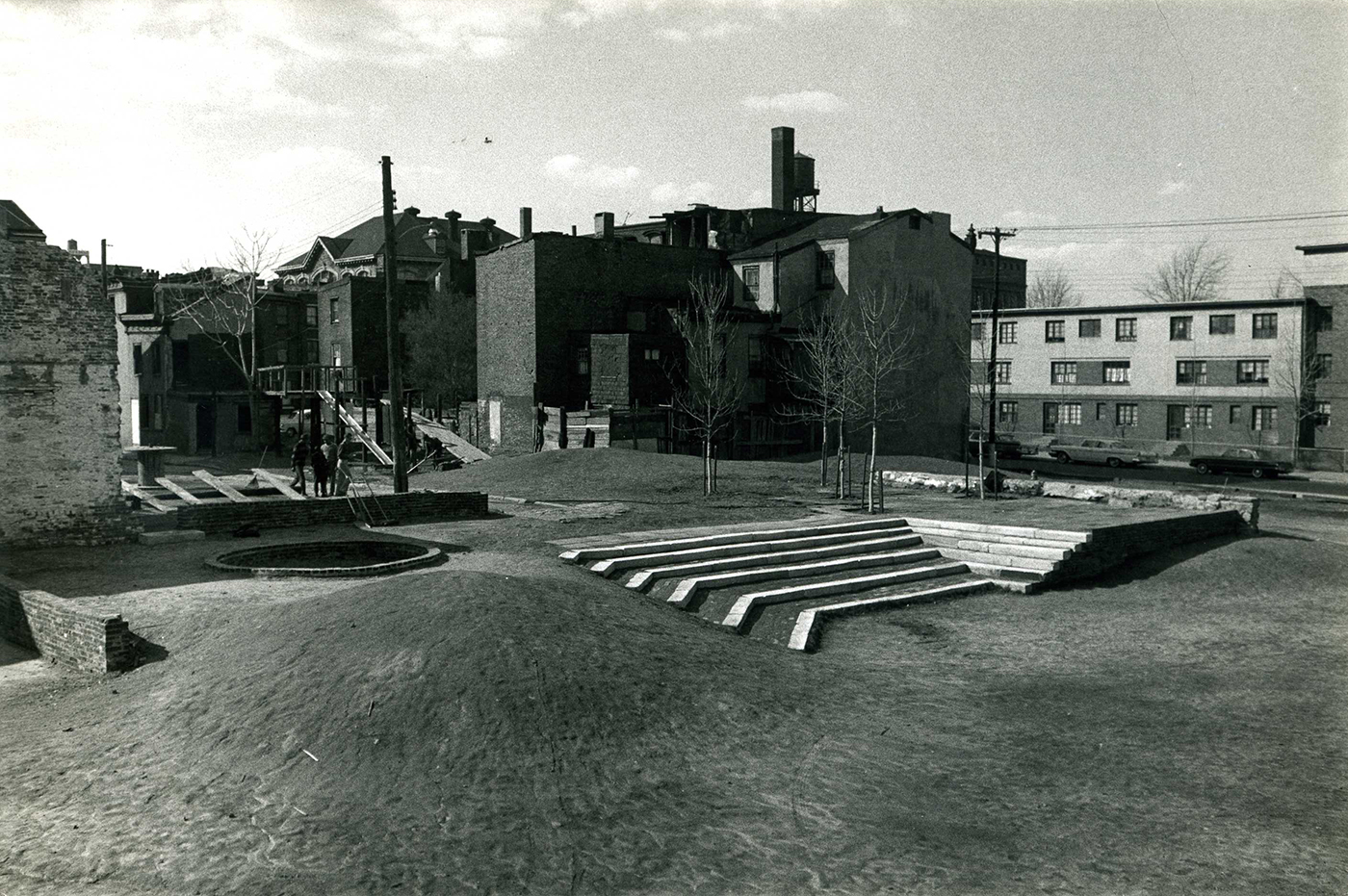Karl Linn (1923-2005)
Karl Linn was born in 1923 in Dessow, Germany. He grew up on a fruit tree farm founded by his mother, Henrietta Rosenthal, as an accredited training center for gardening and horticultural therapy. In 1933, their home was raided by the Nazis and Linn’s father fled to Palestine. Forced to sell the farm, Henrietta followed with the children in 1934.Linn graduated from the Kadoorie School of Agriculture in 1941 and helped to found the Kibbutz Maagan Michael. At 23, Linn moved to Zurich, Switzerland where he trained as a psychoanalyst at the Institute for Applied Psychology, graduating in 1948. He then moved to New York where he had a private practice as a child psychoanalyst. Having learned early that nature could be a powerful force for emotional healing, Linn returned to landscape architecture in 1952. He continued to study both landscape design and psychology, taking a summer course with Stanley White at the Harvard Graduate School of Design in 1954 and graduating from the New School for Social Research in New York with an MA in Gestalt Psychology in 1956. Linn rose quickly in the landscape architecture field earning the commission for Mies van der Rohe’s Seagram building and collaborating with architect Philip Johnson on the building’s Four Seasons Restaurant. In 1959, Linn joined the Landscape Architecture faculty at the University of Pennsylvania. While at Penn, he developed a program to transform vacant lots in urban neighborhoods into neighborhood commons, engaging students, residents, social service agencies, and local governments in the design and construction process. The program evolved into the Neighborhood Renewal Corps Nonprofit Corporation in Philadelphia, and later also in Washington, D.C., and was a model for the Domestic Peace Corps as well as similar design-build centers in eight other cities. Linn retired from teaching in 1986 and moved to Berkeley where he was involved with the Earth Island Institute and the San Francisco League of Urban Gardners. He co-founded Urban Habitat, East Bay Urban Gardners, the People of Color Greening Network, and Berkeley’s Community Gardening Collaborative. The Karl Linn Community Garden in Berkeley was dedicated to him in honor of his life-long service to community and peace. The Karl Linn Collection spans the years c.1925-2005 (bulk 1955-2005) and includes files documenting the life and professional work of landscape architect Karl Linn. The Collection is categorized into six series: Personal Papers, Professional Papers, Faculty Papers, Office Records, Project Records, and Additional Donations. The Project Records make up the bulk of the Collection and consist of correspondence, notes, slides, photographs, magazine and clip files, and drawings.

